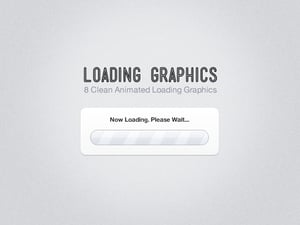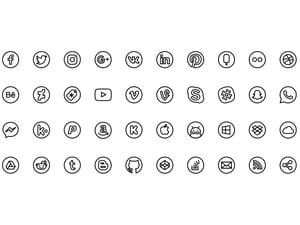
How to Create a Perfect GIF for Dribbble with Photoshop CC
Use Animated Gifs to showcase your designs
Photoshop may not be the number one choice for professional animators to create complex video clips. But, for designers who want to create the occasional short animation, it actually makes a lot of sense to use Photoshop. Most designers are already very familiar with the Photoshop environment, which means a very small learning curve. And on top of that, it's likely that your content is already in a layered .psd file to begin with, which is a bonus.
Animating Static Content
Create a new 800 x 600 pixel document or open your existing content in Photoshop. Set up your document in Photoshop so that any objects that you want to animate are on their own separate, individual layers. Locked background layers cannot be animated, and groups are limited to animating Opacity properties only. If you do have a group that you want to animate beyond Opacity, right click on the group in layers panel and Convert to Smart Object.
When your document is layered and set up, we need to plan our animation. For the purposes of a Dribbble shot, a simple transition in works well, with a long pause on the content before finally looping to back to the beginning. We also want the animation to be fairly short, somewhere around 1-2 seconds for the fade in, with a further 3-4 seconds pause is good.
Go to Window > Timeline to show the animation timeline and click Create New Video Timeline
Click on the timeline or drag the time marker to where you want the transition in to end and the pause to begin. This is the 'finished' position, your artwork should look like you want it to at the end of the animation.
Click the arrow next to the layer that you want animate to show available properties. Then click the stopwatch icon next to the property you want to animate, and Photoshop will create a new keyframe at the current marker position. Note: If you are animating a vector shape layer, you need to use 'Vector Mask Position' rather than 'Position'.
Now drag the marker back to the beginning and click on the small diamond shape next to the stopwatch icon to create another keyframe.
Depending on the property you are animating, you can now make changes. If you want the object to fade in (Opacity), change the Layer Opacity to 0.
If you want the object to slide in (Position), move it off canvas on the side you want it to slide in from.
If you want the object to glow or have other effects (Style), change or turn those effects off in Layer Styles panel. Remember that this is the 'start' position, so opacity should be low, objects should be off-canvas and effects should be off etc.
Click the Play icon to test your animation. Make any tweaks necessary and repeat the process to animate multiple layers or properties.
If you want your animation to repeat when it is finished, click the small gears icon and check the 'Loop Playback' option, you may also want to set the resolution to 100%. Note: This for preview purposes only, you can choose Once or Forever in the looping options when saving for web in the next step.
When you are happy with the result, go to File > Export > Save for Web (Legacy)... and choose GIF from the dropdown. Then click Save...

Recording Dynamic Content
In a lot of instances your content may already have motion. Perhaps you want to show a user interaction in an app mockup, or a fancy CSS3 transition you've been working on. Luckily, you do not need to recreate the motion from scratch in Photoshop, instead you can capture the motion happening live in the browser or other software.
First of all, check to see if you can export your content as an animated .gif from the software you are currently viewing the content with. If that is not an option, then the easiest solution is download some free third party screen recording software. Apps like GIPHY for mac or ScreenToGif for Windows are free to download and very simple to use.
When you have your chosen screen recording software downloaded, open it and set the screen recording area window to the correct dimensions for a Dribbble shot if possible (either 400 x 300 pixels or preferably 800 x 600 pixels) and use it to frame your content on the screen. If you can't fit your content within these dimensions it's okay to go larger and resize later in Photoshop.
Record your content as save it to a .gif file. Then in Photoshop to to File > Open and choose your .gif file. Use Image > Image Size... or Image > Canvas Size to resize if necessary. Go to Window > Timeline to show the step by animation. Remove any unwanted frames by selecting them and clicking the Trash icon.
You can overlay text or other objects by selecting the first frame in the timeline and creating the overlay on a new layer above all other layers.
When you are happy with the result, go to File > Save for Web (Legacy)... and choose GIF from the dropdown. Then click Save...
























Comments